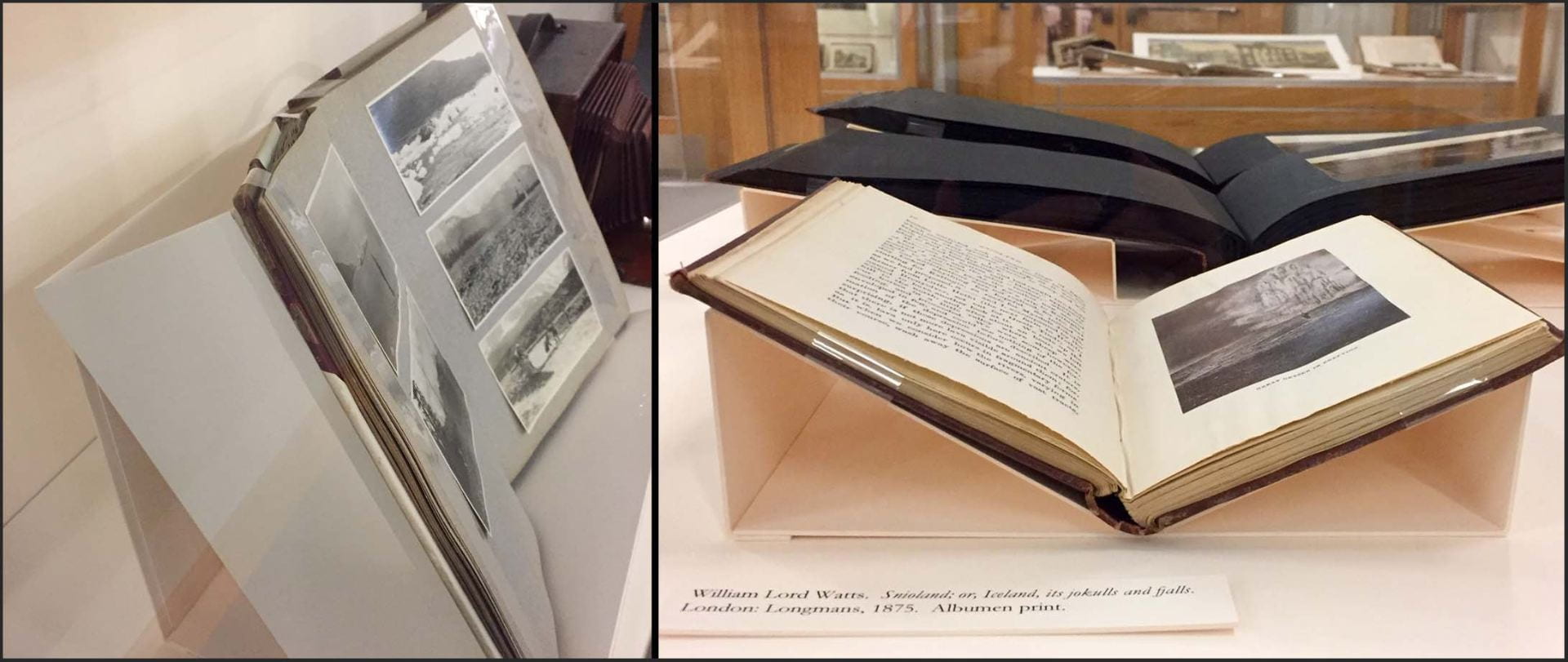Pat Fox
Today’s blog on working with Vivak® for constructing exhibition supports is the 1st in our Preservation Week series highlighting Cornell University Library Conservation Lab’s continuing educational efforts to better preserve and protect our collections.
Cornell University Library’s Division of Rare and Manuscript Collections creates several exhibitions annually, featuring the rich and varied materials in its collections. Conservators play an essential role in these exhibitions, by evaluating the condition of collection materials, providing advice on light levels and handling, treating condition issues, and constructing cradles and mounts to support and safely display items.
In the current exhibit, World Picture: Travel Imagery Before and After Photography, there are several different types of our custom-made matboard cradles and supports in use. Matboard is easy to work with, versatile, and recyclable.

Shown here are the different types of matboard supports used in a vertical case and in a horizontal case.
In addition to matboard, there are other materials used for exhibit supports. I had the pleasure of attending the Ivy Plus Mount Making workshop on April 4th and 5th. Mark Pollei, Assistant Director for Library Conservation and Preservation at the Sheridan Libraries and Museums at Johns Hopkins University, hosted a group of professionals coming from seven different institutions. We came to learn how to construct supports made from Vivak®, a transparent thermoplastic, for library materials on exhibition.

Left: Yan Choi, a LACE fellow studying at the Winterthur/University of Delaware Program in Art Conservation, drills holes in her support pieces; right: sample Vivak® support tilted at 20°
More frequent and larger exhibits are challenges facing the participants in the workshop. We talked about modular supports systems that have pieces that can be reused and reconfigured. We also discussed standardizing display angles and making cradles in three sizes; small, medium, and large. Alessandro Scola, Senior Book Conservator at Hopkins, spent two days sharing the system that he has developed. He uses Vivak®, metal brakes and cutters, drills, and lots of trigonometry to build supports that safely and elegantly display the unique materials that are in his care. He showed us his system in a detailed Powerpoint presentation. Then we had a chance to put his system to use, working with kits Alessandro had assembled to make several different kinds of supports.

Left: Alessandro Scola demonstrating the metal brake used to bend Vivak®; right: trigonometric plans for supports
I have had the opportunity to experiment with Vivak® a little here at Cornell. Vivak® is perfect for items that require transparent supports, like books with unusual formats and certain photographic materials. I’m still learning about Vivak®; I like how it holds its shape, and its transparency allows me to experiment with new display possibilities. Talking with other workshop participants gave me perspective about the exhibit responsibilities of my job. And now I have a group of people to consult when I encounter a challenge I cannot solve myself.

Left: Vivak® supports for lantern slides that need light behind them to be visible, in the World Picture exhibit; right: matboard wedge and a Vivak® angle used to support an 1856 pop-up edition of Robinson Crusoe. This will appear in a single case display in the RMC Reference Room to commemorate the 300th anniversary of the publication of Robinson Crusoe on April 25th, 2019.
For more information on exhibitions, see:

